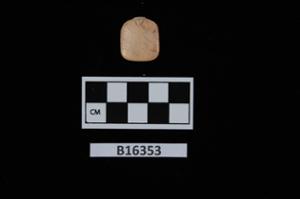Ur, Iraq
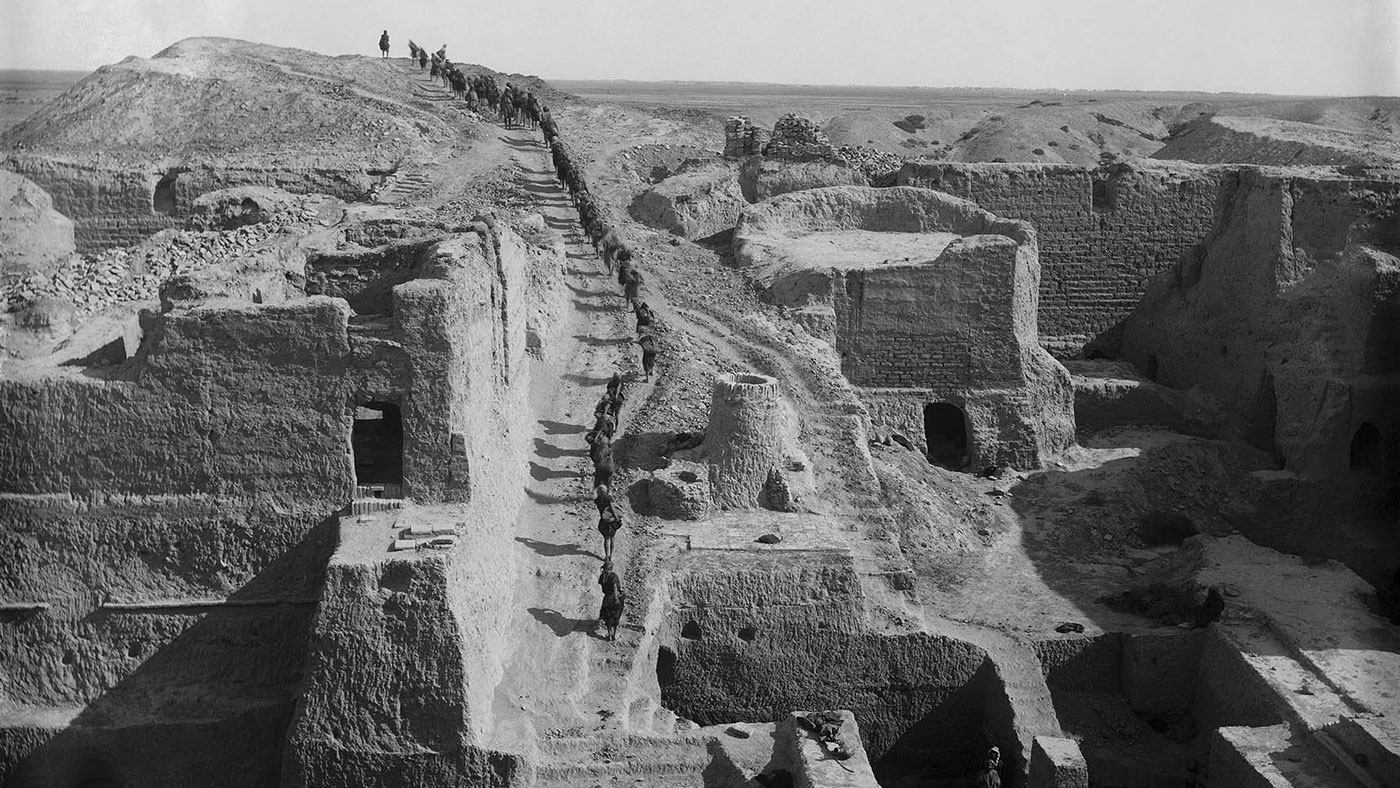
Located in southern Iraq, near the former northern limits of the Persian Gulf, Ur was one of the most famous archaeological excavations—along with Tutankhamun’s tomb in Egypt—during the early 20th century. Frequently described in the popular press, the work at Ur brought the magic of archaeology to life, particularly by tying the discoveries into familiar biblical stories. Between 1922 and 1934, the Joint Expedition of the British Museum and the Penn Museum was directed by C. Leonard Woolley and uncovered some of the most well-known and celebrated art from ancient Mesopotamia. These finds were divided between the two partner institutions (25% each) and the Baghdad Museum in Iraq (50%).
- Object[7,915]
- babylonian[867]
- mediterranean[3]
- near eastern[7,045]
- Yes[2]
- adze[21]
- amphora[10]
- amulet[112]
- animal figurine[136]
- anklet[9]
- applique[17]
- arrowhead[120]
- arrowheads[10]
- axe[88]
- ball[20]
- basin (vessel)[16]
- bead[355]
- beads[107]
- bird figurine[11]
- blade[126]
- blade fragment[10]
- bottle[46]
- bowl[759]
- bracelet[104]
- brick[71]
- brim[10]
- bulla[19]
- cape (clothing)[89]
- celt[31]
- chisel[31]
- comb (hair - grooming tool)[11]
- core[10]
- cosmetic kit[17]
- cosmetic shell[58]
- cup[47]
- cylinder seal[360]
- dagger[52]
- diadem[87]
- door socket[12]
- duck weight[13]
- earring[125]
- equestrian figurine[26]
- fibula (pin)[9]
- figurine[125]
- finger ring[66]
- flower[11]
- furniture model[31]
- game piece[18]
- garment pin[16]
- grinder[22]
- hair pin[14]
- hair ribbon[16]
- hair ring[22]
- hairring[33]
- handle[12]
- human figurine[234]
- incense burner[14]
- inlay[81]
- jar[476]
- jewelry[132]
- knife[21]
- lamp[16]
- lithic[23]
- loom weight[11]
- macehead[20]
- metal fragment[18]
- model[45]
- nail[50]
- needle[92]
- object[55]
- ornament[26]
- pendant[94]
- pin[98]
- pin fragment[12]
- pin head[13]
- pot[174]
- rattle[20]
- raw material[18]
- reproduction[15]
- ribbon[19]
- ring[54]
- scraper[18]
- sealing[411]
- sherd[83]
- sickle[13]
- spearhead[59]
- spindle whorl[45]
- spouted jar[37]
- stamp seal[57]
- statuette[17]
- string of beads[301]
- tablet[820]
- tablet envelope[10]
- token[25]
- tumbler[55]
- ur-namu stele[103]
- vase[53]
- vessel fragment[10]
- vessel lid[15]
- wall cone[57]
- wall cones[13]
- wall nail[19]
- weight[129]
- whetstone[29]
- wreath[14]
- achaemenid[1]
- agade[18]
- akkadian[7]
- al 'ubaid[3]
- antediluvian[6]
- archaic[5]
- archaic i[1]
- archaic iv[1]
- assyrian[17]
- babylonian i[4]
- cassite[5]
- darius i[1]
- early dynastic[2]
- early dynastic i[167]
- early dynastic ii[81]
- early dynastic iii[203]
- early dynastic iiib[31]
- early old babylonian period[26]
- isin[3]
- isin larsa[11]
- isin-larsa[5]
- jemdet nasr[42]
- jemdet nasr period[3]
- kassite[43]
- kassite period[7]
- larsa[19]
- last al 'ubaid[12]
- late al 'ubaid[5]
- middle babylonian period[13]
- minor dynasty[27]
- neo-assyrian period[2]
- neo-babylonian[16]
- neo-babylonian period[15]
- old akkadian period[20]
- old babylonian period[120]
- parthian[1]
- persian period[14]
- post agade[1]
- pre ur iii[2]
- pre-flood[51]
- prehistoric[55]
- rin-sin level[1]
- sargonic[8]
- sargonid[4]
- third dynasty of ur[1]
- ubaid[2]
- ubaid period[8]
- ur i[5]
- ur ii[2]
- ur iii[586]
- uruk[1]
- uruk period[1]
- (limstone?)[1]
- (very possibly pg 1618)[2]
- -3 metres below surface; pg[1]
- -4-5 m pg.[1]
- 1.5 below pg[1]
- 3 metres down, p.g.[1]
- 3.5 m in rubbish of pit a[1]
- a.h.[7]
- a.h. early, a.h. neo-babylonian[2]
- a.h. house iii[2]
- a.h., g 305[6]
- b.c.[2]
- diqdiqqeh[38]
- em[9]
- found 3 1/2 to 5 1/2 m. below brick pavement dated ca. 3100 b.c. in the prehistorical settlement. between flood and royal graves. at n.w. limit of p.g.[11]
- found 5 1/2 to 6 m. below brick pavement dated ca. 3100 b.c. in the prehistorical settlement. transition from post to pre flood levels. p.g. n.w.[10]
- found 6 to 7 m. below brick pavement dated ca. 3100 b.c. in the prehistorical settlement. level of the pre flood period. pg. n.w.[14]
- found 7 1/2 to 8 m. below brick pavement dated ca. 3100 b.c. in the prehistoric settlement. p.g. n.w.[21]
- found 7 to 7 1/2 m. below brick pavement dated ca. 3100 b.c. in the prehistoric settlement. p.g. n.w.[22]
- g 161 a.h.[2]
- g 211, a.h.[2]
- g 217, a.h.[2]
- g 34, a.h.[4]
- g. 129[2]
- g. 306 a.h.[3]
- g. 44, n.h.[2]
- museum tablet room, house 3, a.h.[2]
- n.h. persian g[2]
- n.t. grave 3/37[2]
- n.t. grave 30/16[2]
- n.t. grave 30/18[2]
- p g 1932, house level rubbish[2]
- pft level 1200[3]
- pft, pfg/bb[2]
- pft, pfg/h[4]
- pft, pfg/jj[2]
- pft, pfg/mm[2]
- pft, pfg/ss[2]
- pft, pfg/z[2]
- pg[2]
- pg 1017[2]
- pg 1027[2]
- pg 1054[2]
- pg 1054-c[3]
- pg 1054c[6]
- pg 1100[2]
- pg 1130[2]
- pg 1133[8]
- pg 1136[2]
- pg 1157/23[2]
- pg 1195[8]
- pg 1205[3]
- pg 1234[3]
- pg 1237[3]
- pg 1237, body 64[2]
- pg 1237/16[10]
- pg 1237/22[4]
- pg 1237/30[3]
- pg 1237/4[5]
- pg 1237/40[15]
- pg 1237/45[2]
- pg 1237/47[3]
- pg 1237/64[17]
- pg 1237/67[16]
- pg 1237/69[10]
- pg 1237/70[6]
- pg 1237/8[12]
- pg 1284[5]
- pg 1300[2]
- pg 1307[2]
- pg 1316[2]
- pg 1318[2]
- pg 1332[3]
- pg 1335[2]
- pg 1337[4]
- pg 1379[2]
- pg 1401[3]
- pg 1464 ?[2]
- pg 1524[3]
- pg 1589[2]
- pg 1618[7]
- pg 1625[3]
- pg 1648[8]
- pg 1665[2]
- pg 1687[4]
- pg 1702[2]
- pg 1720[2]
- pg 1744[2]
- pg 1749[9]
- pg 1815[2]
- pg 1845, burial h[3]
- pg 1846, burial c[2]
- pg 789[2]
- pg 800[4]
- pg larsa rubbish[2]
- pg. 1332[2]
- room i, house 3, a.h.[3]
- t. 0097[2]
- tte. group a.[2]
- ziggurat n.w. 1931, level 3, under pavement and wall foundation of room 4 neb. corner fort site[8]
- account[5]
- altar[4]
- animal[50]
- animals[17]
- antelope[18]
- bearded god[7]
- bearded man[14]
- bed[6]
- bird[19]
- boat[20]
- bull[65]
- bull head[5]
- bull?[19]
- bulls?[22]
- camel[6]
- chair[7]
- chariot[10]
- child[13]
- club[6]
- crescent[36]
- date palm[12]
- deer[4]
- deity[12]
- demon[6]
- demon face[4]
- demon head[7]
- dog[15]
- dog?[30]
- dogs?[22]
- dragon[10]
- duck[5]
- eabani[7]
- eagle[22]
- enkidu[11]
- eye[6]
- female head[4]
- figure[6]
- fish[5]
- flower[29]
- frog[6]
- fruit[18]
- gate[4]
- gateway[4]
- geometric pattern[15]
- gilgamesh[30]
- goat[17]
- god[33]
- goddess[15]
- gods[5]
- goose[6]
- hero[17]
- horse[9]
- horse head[8]
- human[4]
- human figure[43]
- human head[7]
- hunter[23]
- ibex[16]
- inscription[11]
- king[5]
- leaves[17]
- lion[92]
- lion?[5]
- list[4]
- man[48]
- martu[7]
- mask[6]
- monkey[12]
- musician[5]
- name[6]
- nude[7]
- nude woman[94]
- palm[7]
- pazuzu head[5]
- pig[6]
- plant[5]
- ram[8]
- rider[12]
- rosette[30]
- rug beater[15]
- scorpion[22]
- seated figure[8]
- seated god[15]
- seated goddess[35]
- sheep[6]
- sheep?[45]
- snake[10]
- stag[6]
- standing figure[9]
- standing goddess[7]
- star[16]
- table[18]
- tree[20]
- vase[7]
- votary[8]
- war god[5]
- wheat stalk[6]
- wheel[12]
- woman[63]
- worshipper[41]
- akkadian langage[2]
- akkadian language[2]
- sumerian[376]
- sumerian language[316]
- agate[83]
- alabaster[187]
- amber[2]
- amethyst[25]
- aragonite[4]
- ass tooth[1]
- basalt[35]
- beryl[6]
- bitumen[64]
- bone[42]
- bronze[800]
- calcite[64]
- carnelian[394]
- ceramic[1,316]
- chalcedony[15]
- chlorite[1]
- clay[940]
- cockle shell[2]
- conch shell[6]
- cone shell[1]
- copper[825]
- copper alloy[171]
- diorite[250]
- dolorite[2]
- egyptian blue[6]
- electrotype[25]
- electrum[7]
- fabric[1]
- faience[14]
- feldspar[4]
- fish bone[1]
- flint[125]
- frit[91]
- garnet[1]
- glass[28]
- glaze[5]
- goat bone[1]
- gold[574]
- gold foil[1]
- granite[1]
- green jasper[1]
- gypsum[3]
- hematite[57]
- iron[30]
- ivory[12]
- jadeite[24]
- jasper[17]
- lapis lazuli[598]
- lava stone[1]
- lead[13]
- limestone[215]
- magnesite[2]
- malachite[2]
- marble (stone)[61]
- metal[13]
- metal alloy[4]
- mollusk shell[3]
- mother-of-pearl[1]
- mud[3]
- obsidian[73]
- onyx[1]
- ostrich egg[1]
- ostrich egg shell[1]
- paint[117]
- paste[55]
- pigment[66]
- plaster[12]
- plaster of paris[1]
- porphyry[12]
- quartz[56]
- red jasper[1]
- reed (plant)[3]
- rock crystal[1]
- sand[4]
- sandstone[18]
- sard[2]
- schist[1]
- serpentine[2]
- shale[3]
- sheep bone[1]
- shell[300]
- silver[314]
- slate[3]
- soapstone[72]
- steatite[77]
- stone[336]
- terracotta[1,229]
- travertine[55]
- turquoise[3]
- unbaked clay[1]
- wood[17]
- actual citation[654]
- general reference[3]
1 - 30 of 7,915 Records
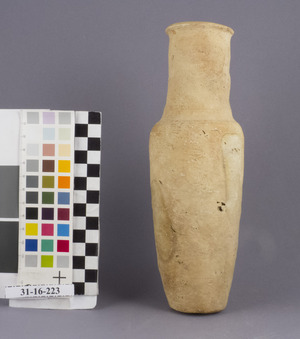
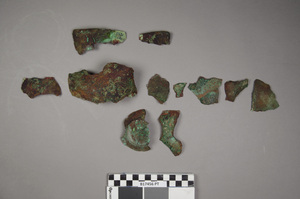
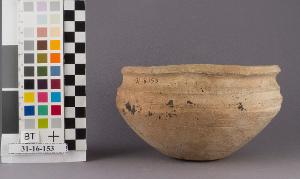
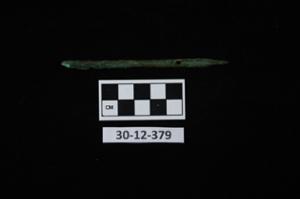
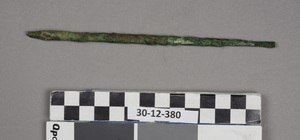
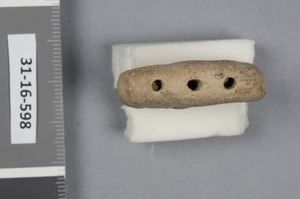
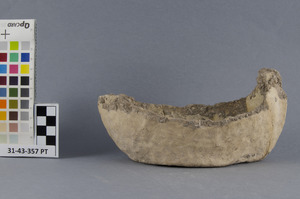
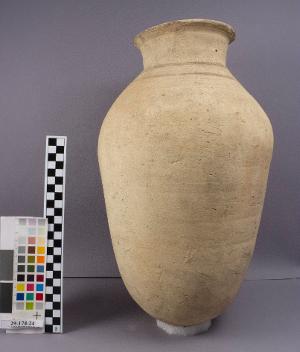
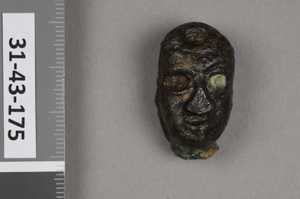
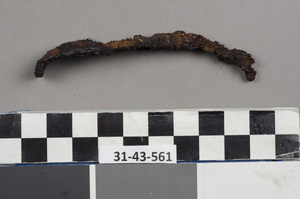
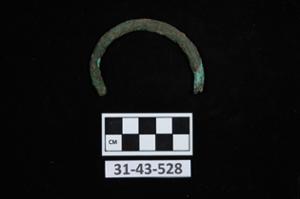
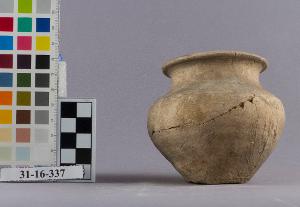
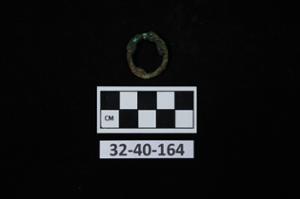
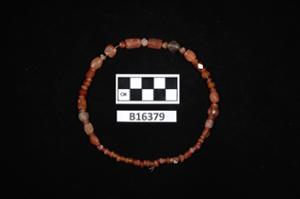
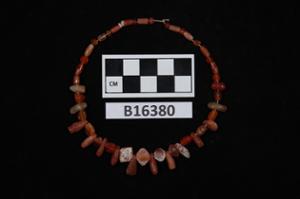
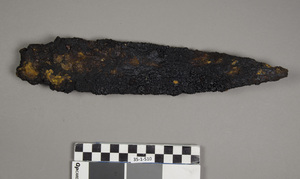
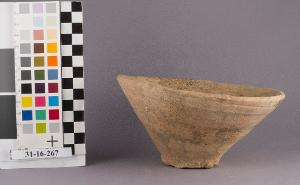
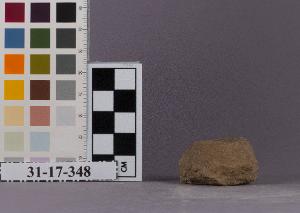
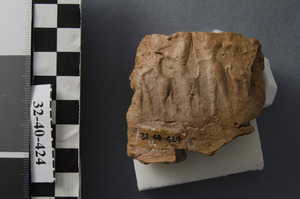
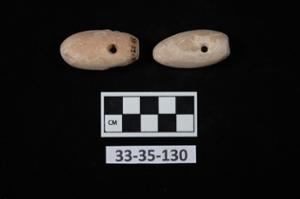
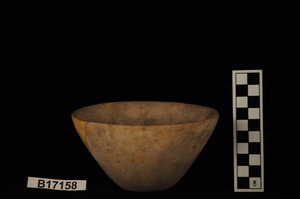
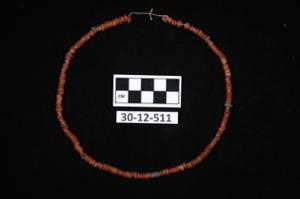
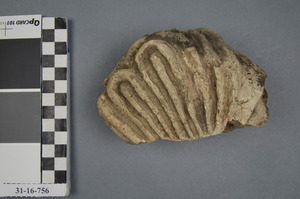
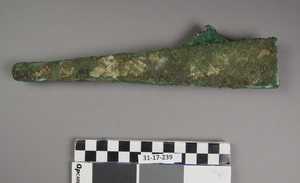
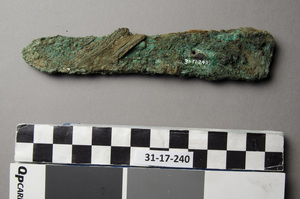
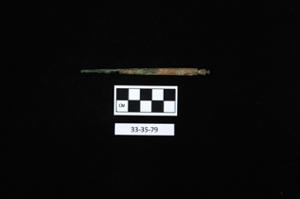
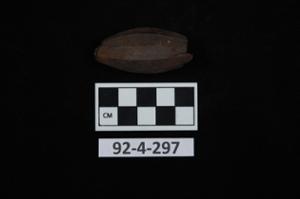
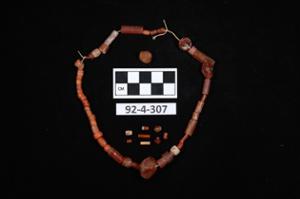
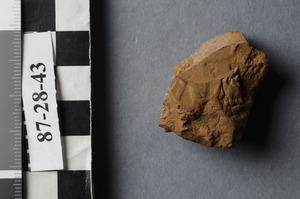
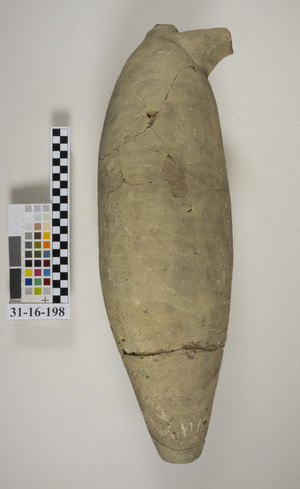
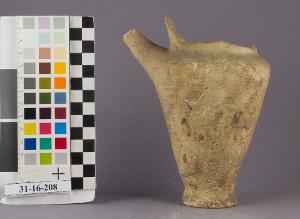
1 - 30 of 7,915 Records


